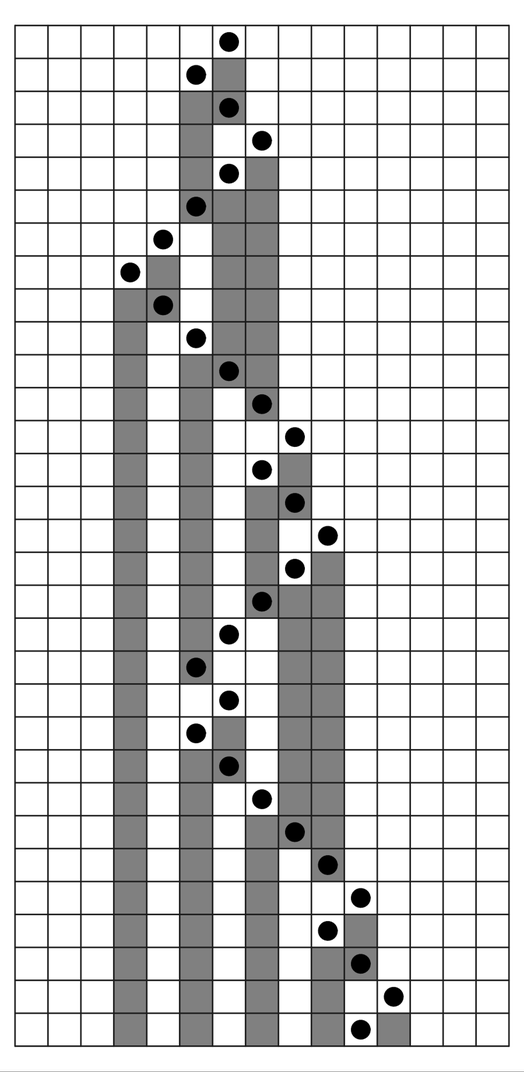Mobile Automata
One of the basic features of a cellular automaton is that the colors of all the cells it contains are updated in parallel at every step in its evolution.
But how important is this feature in determining the overall behavior that occurs? To address this question, I consider in this section a class of systems that I call "mobile automata".
Mobile automata are similar to cellular automata except that instead of updating all cells in parallel, they have just a single "active cell" that gets updated at each step—and then they have rules that specify how this active cell should move from one step to the next.
The picture below shows an example of a mobile automaton. The active cell is indicated by a black dot. The rule applies only to this active cell. It looks at the color of the active cell and its immediate neighbors, then specifies what the new color of the active cell should be, and whether the active cell should move left or right.
Much as for cellular automata, one can enumerate all possible rules of this kind; it turns out that there are 65,536 of them. The pictures at the top of the next page show typical behavior obtained with such rules. In cases (a) and (b), the active cell remains localized to a small region, and the behavior is very simple and repetitive. Cases (c) through (f) are similar,
 |  |
An example of a mobile automaton. Like a cellular automaton, a mobile automaton consists of a line of cells, with each cell having two possible colors. But unlike a cellular automaton, a mobile automaton has only one "active cell" (indicated here by a black dot) at any particular step. The rule for the mobile automaton specifies both how the color of this active cell should be updated, and whether it should move to the left or right. The result of evolution for a larger number of steps with the particular rule shown here is given as example (f) on the next page.



